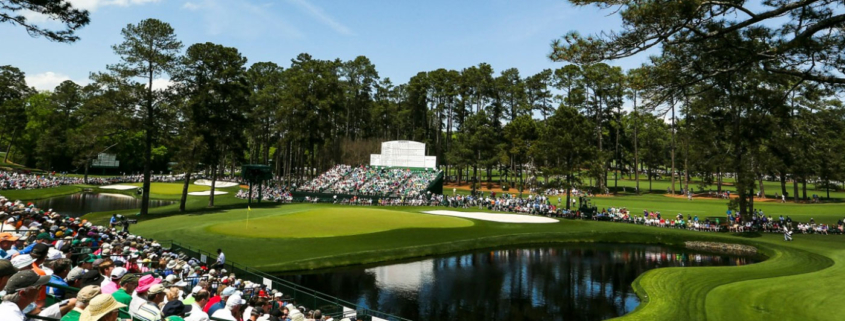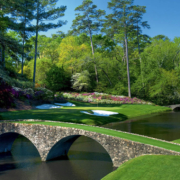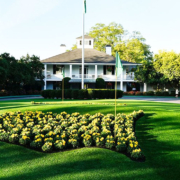A Different Masters
This year’s Masters Tournament will be historic on many levels. It’ll be the first time the competition has been held in November and it’ll be contested with no patrons (fans) in attendance. The golf course will look different. The course won’t play the same. The Augusta ambience will be different. The Masters has always been the first major championship of the year. In 2020 it will be the last. Whether you’re watching on television or playing in the tournament, the 84th Masters will be different.
Generally, The Masters is scheduled to finish on the second Sunday of April. But that hasn’t always been the case. The first “Augusta Invitational” was held in late March of 1934. Four times the tournament has ended on the first Sunday of April and twice, 1979 and 1984, the third Sunday of the month hosted the final round.
For many golf fans, The Masters marks the start of spring and the beginning of the golf season. Tournament founders, Bobby Jones and Clifford Roberts, also placed the tournament on the spring calendar making it easy for sports writers, headed back north from baseball’s Spring Training in Florida, to make a stop in Augusta and cover the competition.
And with Augusta National built on the grounds of a former nursery, the flowering plants and beautiful azaleas are part of the experience of the Masters Tournament in April. The golf course will have a much different look this week than it does in the spring.
“Not knowing how the golf course is going to play in November, when people ask me ‘What’s it going to be like?’ ‘I have no idea’ is my answer,” said Ponte Vedra resident, Billy Kratzert, an eight-time Masters participant and a four-time winner on the PGA Tour.
Kratzert is now doing commentary and analysis for the Golf Chanel and for CBS Sports during Masters week. He says playing the tournament in November will be an added mystery for this year’s Masters.
“I do think if the longer hitter gets there and is in form, they might have an advantage,” he said.
A two-time winner on the PGA Tour, Jacksonville’s Len Mattiace is part of the Masters lore with his runner-up finish in a playoff in 2003; Len played at Augusta once as a amateur as the member of the Walker Cup team and twice as a professional. He says the whole atmosphere of playing The Masters at Augusta National is completely different than any other tournament.
“Like twenty times greater,” Mattiace said of the electricity in the air at Augusta. “There’s a great buzz on the golf course. Those big, John Daly, Tiger Woods, type of great crowds with a really electric atmosphere. When you have those crowds following you, there’s an electricity in the air.”
“The energy the players get at Augusta, that’s one of the special things about the Masters,” Kratzert agreed. “You hear what’s going on on the rest of the golf course.”
He should know. Kratzert finished fifth at Augusta in 1978 and an opening round 68 gave Kratzert a share of the lead after Thursday in 1986. That year’s Masters was eventually won for the sixth time by Jack Nicklaus.
“Without the patrons it’ll affect some players,” Kratzert said, reflecting on the different personalities of professional golfers. “There are players who love to know what’s happening all around the golf course. We talk about the roars at Augusta National. You immediately know if you’re standing on the tenth tee that somebody hit a great shot on Amen Corner. The roars define what players were doing. Then you can look on the leaderboard and actually see it. There are a lot of players who would build off those roars from the patrons.”
Both Tiger Woods and Rory McIlroy have said playing without a gallery in 2020 has been not only different but sometimes difficult.
“It is very different,” Tiger explained during the FedEx Cup playoffs in August. “You just don’t know where the ball lands sometimes. You’re expecting the roars and you don’t hear anything. … Obviously the energy is not anywhere near the same.”
McIlroy agreed and took it a step further saying he’s looking to the gallery to help get into another gear.
“I want to get an intensity and some sort of fire, but I just haven’t been able to,” Rory also said in August. “And look, that’s partly to do with the atmosphere and partly to do with how I’m playing. I’m not inspiring myself, and I’m trying to get inspiration from outside sources to get something going.”
“You hit good shots and you get on nice little runs. We don’t have the same energy, the same fan energy,” Tiger added.
No doubt it should be different this week with a Green Jacket on the line.
Mattiace is currently playing on the Champions Tour and at a recent event in South Dakota, fans were allowed on the course. But he sees the different situation that golfers are facing.
“The guys have experienced this already,” he explained. “It’s so quiet, there’s no buzz. At Augusta they’ll definitely notice it on the second shots. There won’t be people scattering or talking. You won’t know if it’s on or off the green.”
“If everybody was 100% truthful, the patrons at Augusta bring that special energy to it,” Kratzert said. “Tiger, (Phil) Mickelson, a DJ (Dustin Johnson) a Rory (McIlroy), they’ve all experienced that. I’d like to see (Bryson) DeChambeau react to that. He’s been able to win a major without fans.”
Besides the atmosphere, just playing Augusta National is always a challenge. The speed of the greens, the elevations, the precision necessary to play good shots all put special demands on the players. And without patrons, the golf course will have a very different look to the competitors “inside the ropes.”
“As a player, when you don’t have the patrons back there with no definition, it’ll be different,” Kratzert said. “When I played there as an amateur in ’74 over from the University of Georgia, I couldn’t believe how challenging it was from a size standpoint.”
“When you go there to play casually, the rolling hills, it’s all out in the open,” Mattiace said of the sheer size of Augusta National. “There’s nobody around, nothing defines the buffers of the holes. When there are fans there, it’s like a big block of color that defines the hole.”
Without galleries, often times ten-deep, outlining each hole, players will have a whole different challenge. Kratzert says playing practice rounds at Augusta National is one of the fun things during the week. But it could be different this year.
“It could be more serious. The course will demand very exacting sight lines and landing spots on the green. You’ll have to identify those during the week. There will be a lot of learning. It won’t change the quality of shots that need to be hit. Just the optics for the players.”
Listening to what the players have to say about the golf course this Monday through Wednesday will be a big part of Kratzert’s preparation for his broadcast role this week. He’s especially keen to talk with guys after practice rounds.
“A lot of times on Tour players are like, ‘I have to go play a practice round.’” Kratzert say of the week-to-week grind on the PGA Tour. “I think players at Augusta National get up in the morning wanting to play practice rounds! The difference this week is ‘I want to get out there and see how it is.’”
Both Kratzert and Mattiace thought certain shots will be particularly difficult at Augusta National without the galleries defining each hole.
“That second shot on eighteen, it’s hard to define the outline of the green,” Mattiace said of the elevation change when hitting the second shot on Augusta’s finishing hole. “Same on number one. You can’t see the definition of the green, maybe the top portion of the flag. You have to hit a big drive on fourteen and without people there, you won’t see what’s going on at the right of the green. And maybe even seventeen, any type of shot that’s uphill.”
“With eighteen and all of the patrons around it you get a sense ‘this is a big green’ but in actuality, it’s not that big,” Kratzert explained. “All of the Masters winners have played there without fans. But when you’re used to having the patrons behind the green, you can pick out ‘the gentlemen in the yellow shirt’ and use it as an aiming point. It’ll be more challenging to hit your spots, no question.”
Playing in November will be unique for the players and the tournament, and it’s a bit of a mystery how it will compare to playing in April. But one thing could be the same. The weather this week in Augusta is forecast to be mild with very little, if any, rain and temperatures in the upper ‘70’s and low 80’s.
Perfect golf weather.







